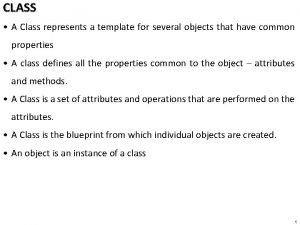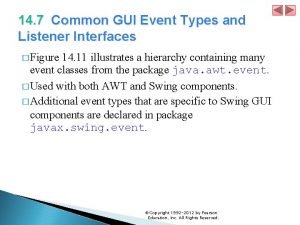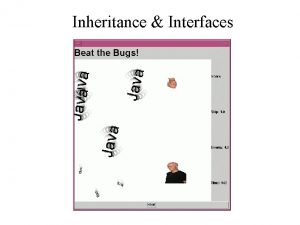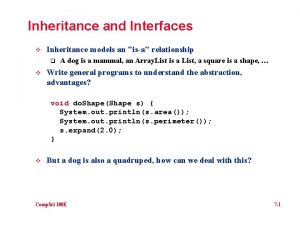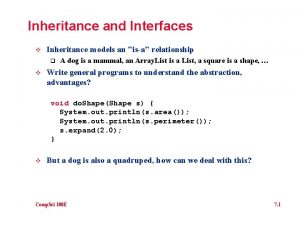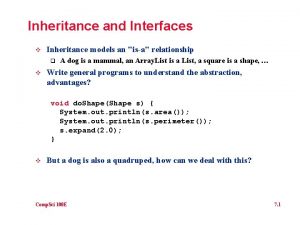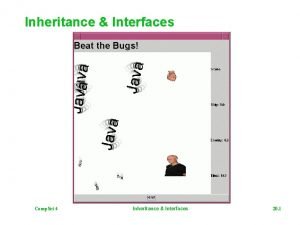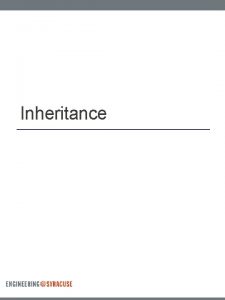Inheritance and Interfaces v Inheritance models an isa







- Slides: 7

Inheritance and Interfaces v Inheritance models an "is-a" relationship q v A dog is a mammal, an Array. List is a List, a square is a shape, … Write general programs to understand the abstraction, advantages? void do. Shape(Shape s) { System. out. println(s. area()); System. out. println(s. perimeter()); s. expand(2. 0); } v But a dog is also a quadruped, how can we deal with this? Comp. Sci 100 E 8. 1

Single inheritance in Java v A class can extend only one class in Java q q v All classes extend Object --- it's the root of the inheritance hierarchy tree Can extend something else (which extends Object), why? Why do we use inheritance in designing programs/systems? q q q Facilitate code-reuse (what does that mean? ) Ability to specialize and change behavior o If I could change how method foo() works, bar() is ok Design methods to call ours, even before we implement o Hollywood principle: don't call us, … Comp. Sci 100 E 8. 2

Multiple Interfaces v Classes (and interfaces) can implement multiple interfaces q q q v An interface specifies the name (and signature) of methods q q v A dog is a mammal, a quadruped, a pet How come canine is different? What behavior do quadrupeds have? Pets have? No implementation, no state/fields Yes for constants In this course, by convention, we'll often use interfaces q q Emphasize design before implementation Use abstract/default classes for code reuse, state Comp. Sci 100 E 8. 3

Inheritance Example public class Util. Record extends Record { // assumes Record’s fields are protected, not private String kind; public Util. Record(){ this("", 0, 0, ""); } public Util. Record(String a, String f, int s, int o, String e, String k) { super(a, f, s, o, e); kind = k; } /* Comp. Sci 100 E etc */ 8. 4

Comparable and Comparator v Both are interfaces, there is no default implementation q q v Where do we define a Comparator? q q v In its own. java file, nothing wrong with that Private, used for implementation and not public behavior o Use a nested class, then decide on static or non-static o Non-static is part of an object, access inner fields How do we use the Comparator? q v Contrast with. equals(), default implementation? Contrast with. to. String(), default? Sort, Sets, Maps (in the future) Does Hashing (future topic) have similar problems? Comp. Sci 100 E 8. 5

Comparable Example public class Record implements Comparable { public Record(String a, String f, int s, int o, String e) {. . . } public Record(Record rec) {. . . } int compare. To(Record r) { // comparision code goes here // set n to neg # if <, 0 if ==, and pos # if > return n } Comp. Sci 100 E 8. 6

MVC: Model, View, Controller v A model is the state and brains of a system q q v The view is how we look at the model q q v In a game it's all the pieces and where they are In a spreadsheet it's the data and the formulae Spread sheet has graphs, charts, cells, text, … Game has board, number of opponents, hit-points, … When the model changes, the views reflect the changes q q q The model tells the views how/if it has changed Model sends information to views OR View asks model for information Comp. Sci 100 E 8. 7



